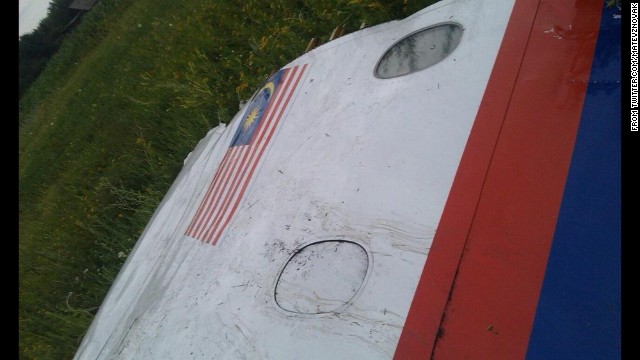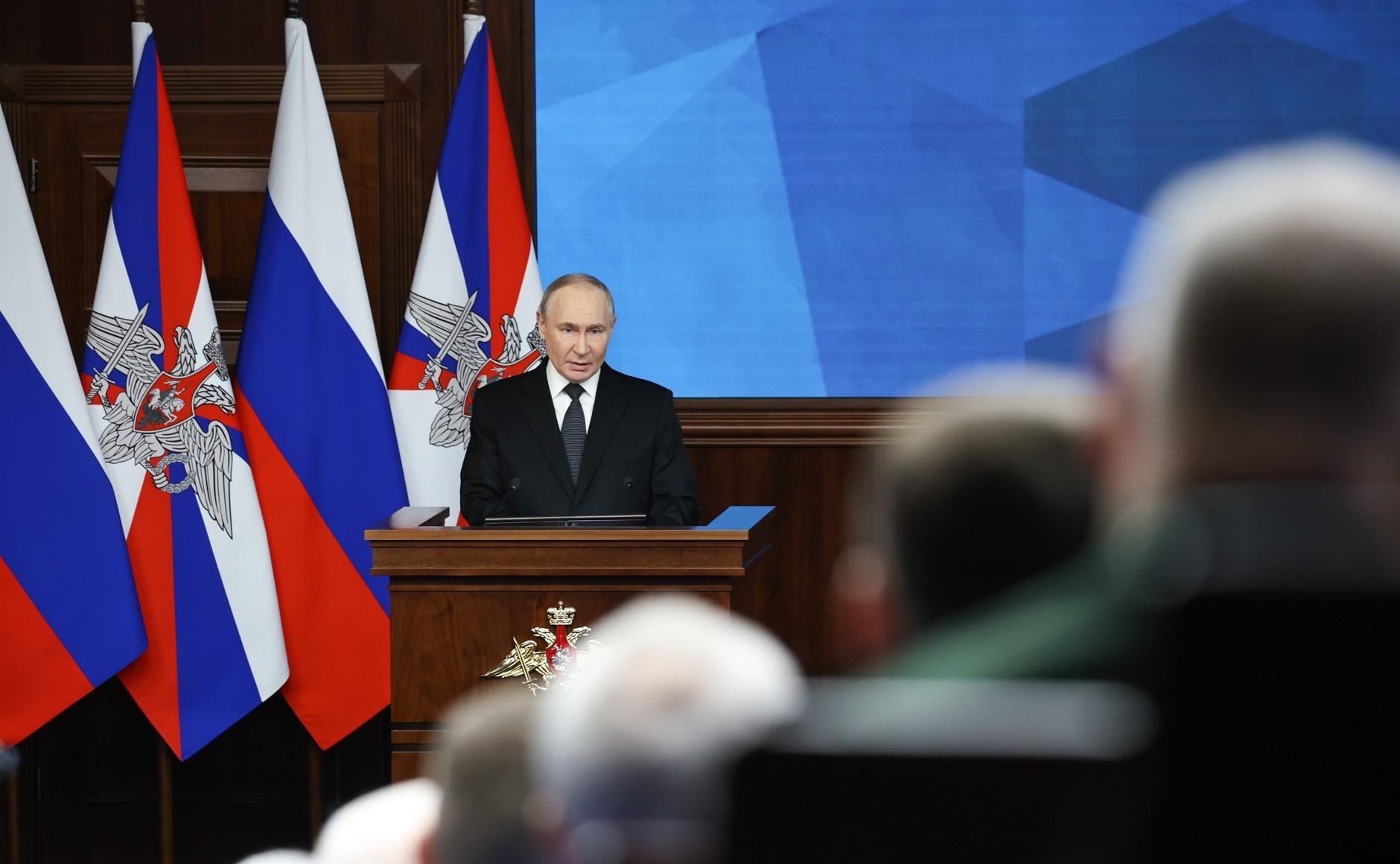
Russia and Rebels Claim Innocence on Flight MH17, Blame Ukraine and US
Russia and Rebels Claim Innocence on Flight MH17, Blame Ukraine and US
The Malaysian passenger jet Flight MH17, which crashed on July 17, killing 298 people, was apparently shot down over the territory of the Ukrainian region of Donbas, controlled by pro-Russia and Moscow-backed separatists. Russian authorities have gone into their traditional mode of rejecting any possible guilt. Moscow is angrily rebuffing circumstantial evidence indicating the rebels could have shot down Flight MH17 by mistake. The dominant theory is that the separatists confused the Malaysian airliner with a Ukrainian military transport plane on a supply mission in the Donbas warzone and shot it down using a surface-to-air BUK M1 missile (known in the West as the SA-11 “Gadfly”), possibly provided by Russia or made operational with Russian technical assistance. The Russian Ministry of Defense went public, delivering a host of other possible versions, implicating the Ukrainian military of shooting down Flight MH17 using an Su-25 “Frogfoot” attack plane that fired an R-60 air-to-air missile (NATO codename AA-8 “Aphid”). Alternatively, the Russian defense ministry proposed that the passenger jet may have been hit by a Ukrainian-controlled BUK M1 missile. The chief of the Main Operational Directorate of the General Staff of the Russian Armed Forces, Lieutenant-General Andrei Kartopolov, demonstrated this week in Moscow computerized animations of Russian radar and satellite-gathered intelligence, alleging there were Ukrainian BUK M1 launchers in Donbas that could have shot down Flight MH17. But he provided no evidence that Ukrainian forces indeed fired their BUK M1 missiles, and he gave no explanation for what reason they would want to target a foreign passenger jet. Kartopolov also implied the Pentagon could be implicated in the conspiracy to destroy Flight MH17, since, “by some coincidence,” a US spy satellite was over Donbas at the time of the MH17 crash (mil.ru, July 21).
Russian air control radars apparently registered an unidentified blip suddenly appearing on screen close to flight MH17 at the moment it was apparently hit; this blip later disappeared. Kartopolov insisted the radar signature was a Ukrainian military jet, apparently an Su-25 that could have attacked Flight MH17, using its two R-60 short-range heat seeker “shoot-and-forget air-to-air,” which these military planes are designed to carry for self defense. According to the chief of staff of the Russian Air Force, Lieutenant-General Igor Markushev, who together with Kartopolov presented the official Russian outline of the MH17 crash, Ukrainian officials deny any of their military aircraft were in air at the time over Donbas, “but you see that is not so,” which is an indication of guilt, he alleged (Interfax, July 21).
There seems to be a serious mix-up about which military-technical narrative to accept as the most plausible one: Was it a Ukrainian Su-25 jet or a BUK M1 missile? Both theories are being promoted simultaneously, thus creating confusion. The Su-25 is a slow-flying, armored, ground-attack jet, not designed to fly higher than 7 kilometers, while Flight MH17 disintegrated at over 10 km. The Su-25 does not have radar; it cannot act as an effective high-altitude interceptor for seeking and destroying a high-speed target. The R-60 missile was produced in the 1970s and 1980s in Tbilisi, Georgia, and went out of production in 1991 as the Soviet Union disintegrated. In the Russian Air Force, the R-60 missile stockpile of Cold War leftovers has already been removed from service, and the Russian fleet of Su-25 attack jets does not carry them anymore.
The Russian version of Flight MH17’s downing—it being destroyed by a Ukrainian R-60 fired by an Su-25—is mindboggling, but it is being actively promoted. Former Russian Air Force commander Army General (ret.) Vladimir Mikhaylov declared on Cannel One of Russian state TV: “The Su-25 is slower than the Flight MH17 Boeing 777 and cannot fly steadily at heights over 7 km, but that is not important—the Ukrainian jet pointed its nose at the passenger jet and fired from several kilometers.” According to Mikhaylov, the attack on Flight MH17 “was designed by Ukrainian air traffic controllers from the Dnepropetrovsk Civilian Air Traffic Control Center” and they were conspiring “for Flight MH17 to crash into Russian territory,” implicating Russia in the crime. Washington knew everything and is presently covering up “this hideous crime” (ITAR-TASS, July 24).
The Russian defense ministry angrily rejected US intelligence findings, which have implicated the separatist Donbas rebels in shooting down Flight MH17 with a BUK M1 missile. “The Americans say the Ukrainian military could not have shot down Flight MH17, because their BUK M1 missiles were out of range to make a hit—how do they know that and where is the evidence the missile was fired from rebel-controlled territory?” Deputy Defense Minister Anatoly Antonov told Russian state TV, continuing, “their findings do not concur with the data we [with General Kartopolov] have presented” (Vesti, July 24).
According to Kartopolov, the unidentified blip on the radar screen, declared to have been a Ukrainian Su-25, appeared from nowhere and “disappeared in 4 minutes,” as the debris of Flight MH17 tumbled from 10 km to the ground (mil.ru, July 21). This radar blip could have been, say, a large chunk of debris from the midair passenger jet explosion (the tail compartment, maybe) tumbling down from 10 km. Kartopolov ended his press briefing by announcing: “The Russian Federation has not given the rebels BUK M1 missile launchers or any other armaments whatsoever” (mil.ru, July 21). Had Kartopolov stopped at only denying the handover of BUK M1 missiles to the rebels, he could have stayed on the side of greater probability. However, to imply the rebels in Donbas did not get any weapons or military supplies whatsoever from Russia—when they are increasingly using large amounts of heavy weapons, while columns of tanks, other armor, truckloads of weapons and munitions, as well as hundreds of Russian volunteers have been spotted crossing the border—is an incredible statement. Such a claim puts into jeopardy the credibility of everything Kartopolov and other officials have been asserting about Flight MH17 so far. The Russian ruling elite seems to be closing ranks in placing the blame on the Ukrainian military and the United States. Any evidence to the contrary will be rejected outright—another old Soviet tradition restored in President Vladimir Putin’s Russia.


